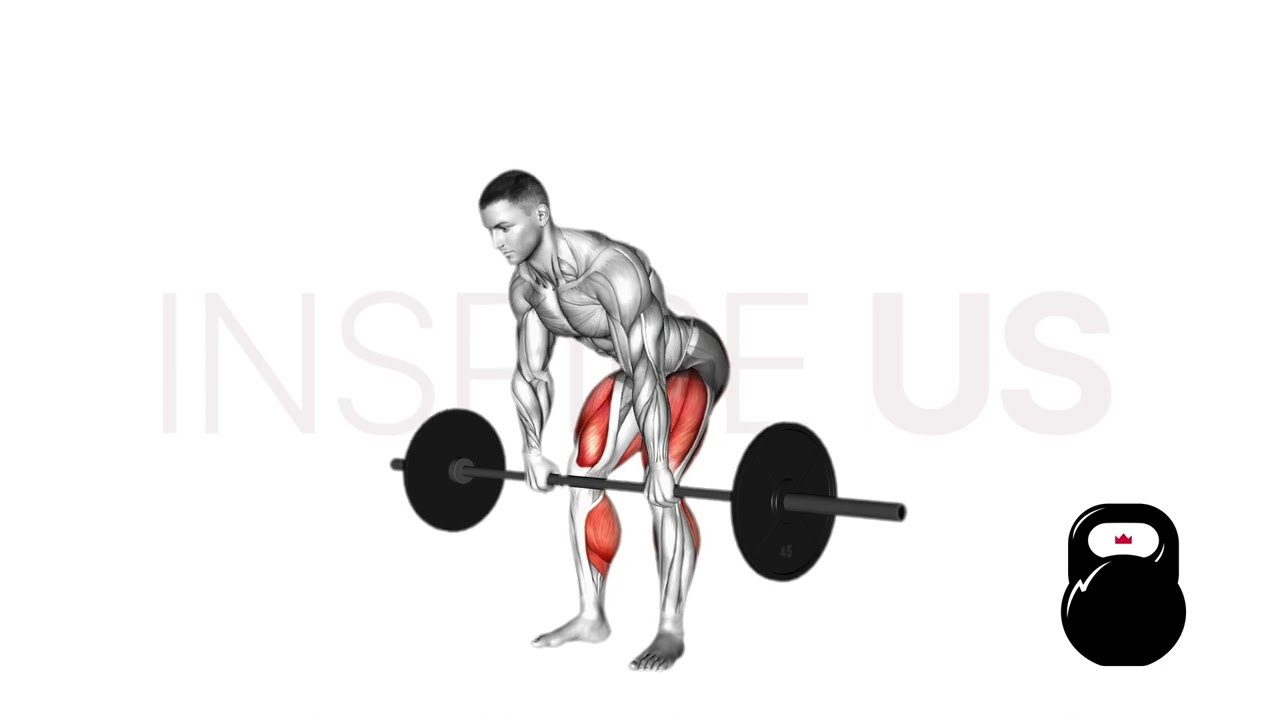Pause Deadlift: Benefits, Muscles Worked, and More
Few variations of the deadlift compare to the pause deadlift; a simple change in cadence that turns the otherwise ordinary deadlift repetition into one of the best lower-body explosiveness builders available.
But before including this rather advanced exercise into your program, it’s important to first grasp what the pause deadlift is, and how best to take advantage of its numerous benefits.
To put it short, the pause deadlift is simply a regular deadlift performed with a pause during the initial pull of the movement. This is done so as to better target the muscles of the lower body, and to ensure that the lifter’s deadlift execution is as optimized as possible.
What are Pause Deadlifts?
In more technical terms, the pause deadlift is a multi-joint compound exercise generally seen as a more advanced progression to the conventional deadlift.
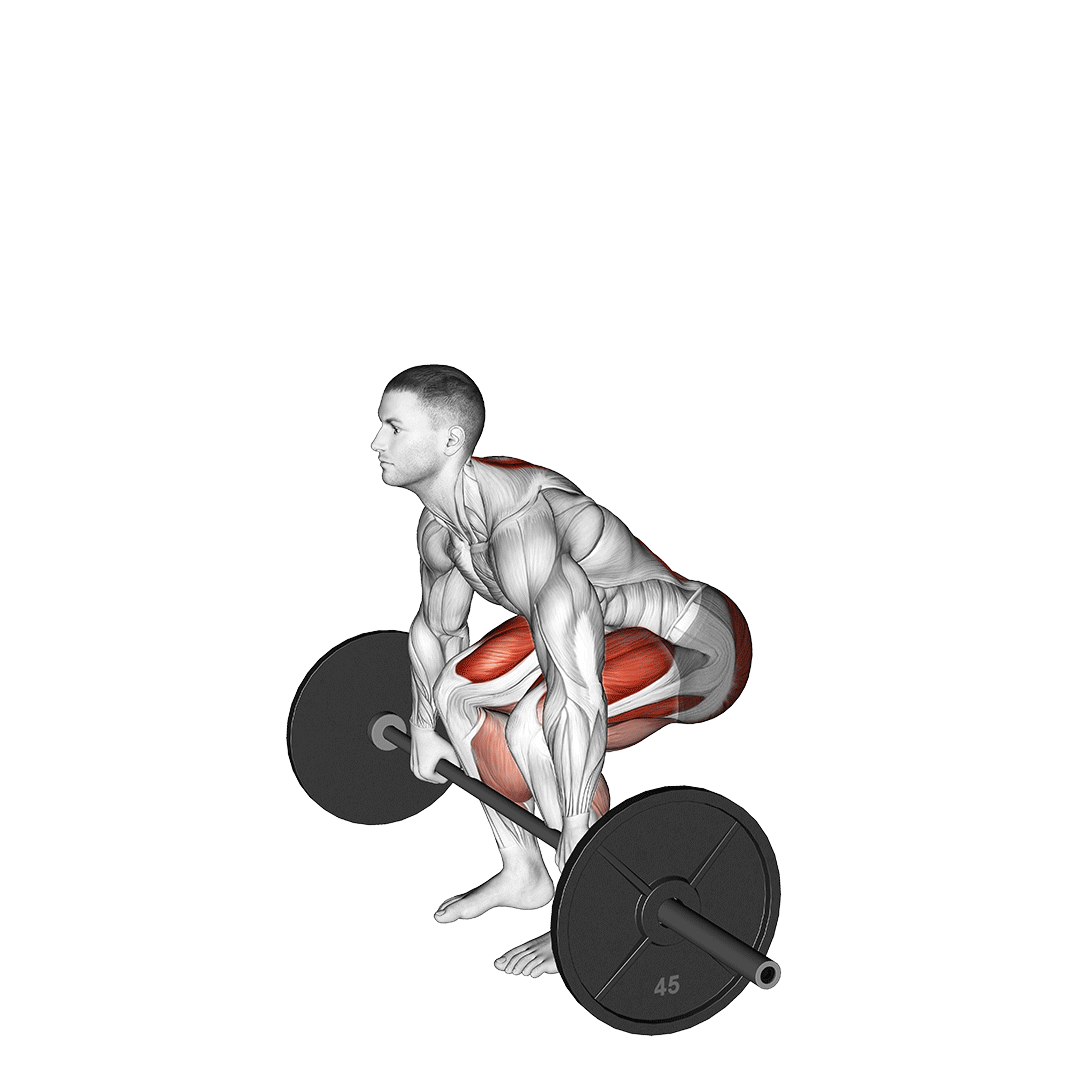
In nearly all aspects, the pause deadlift is identical to the conventional deadlift. It is only the addition of a pause mid-way through the repetition that sets the pause deadlift apart from regular deadlifts.
While it primarily serves as a technique specificity tool, some lifters may wish to substitute their regular deadlift sets with pause deadlifts for greater emphasis on certain muscle groups - alongside its reduced joint impact due to the inherently lower training volume needed.
Who Should Do Pause Deadlifts?
Pause deadlifts are more technically complex than conventional deadlifts, and as such anyone performing them should have an already well-established understanding of basic deadlift mechanics.
Novice lifters who wish to achieve the same benefits may be better served performing block deadlifts instead.
How to Program Pause Deadlifts
In terms of workout exercise placement, pause deadlifts are either used as a remedial substitute to regular deadlifts, or as an adjunct exercise performed after regular deadlift sets have already been completed.
Because of the lengthy time under tension in each repetition of the pause deadlift, lifters should be performing the exercise with a lower amount of set volume in mind.
2-3 sets of 3-5 repetitions with the lifter’s conventional deadlift working weight is a good starting point.
Alternatively, total resistance may be lowered while deadlift working set volume may be used; Subtracting 10-15% of conventional deadlift working weight should be sufficient enough to account for the greater exertion of each pause deadlift repetition.
How to Do Pause Deadlifts
To perform a repetition of the pause deadlift, the lifter will set up the exercise in much the same way they would with a regular deadlift.
Feet set hip-width apart, knees and hips bent and the back firmly held in a neutral curvature.
To begin the repetition, the lifter will push through the heels of their feet and pull the barbell from the floor - only, instead of continuing through by hinging the hips, the lifter will arrest their momentum and pause with the bar only a few inches off the floor.
The exact point in which the lifter will pause can vary between different training needs, but a good area to pick is before initiating a full hip hinge and extending the knees, but after the plates have left the floor.
After holding their paused stance for several seconds, the lifter will continue the deadlift as normal by extending the knees and pushing the hips forward.
Once standing upright, the lifter will return the barbell to the ground, thereby completing the repetition.
What Muscles are Worked by Pause Deadlifts?
Like all other kinds of deadlifts, pause deadlifts are a compound exercise - meaning that they train more than a single muscle group at a time.

Of course, not all muscles will be worked to the same extent, and those worked to a lesser capacity than the primary mover muscles are called secondary mover muscles, whereas muscles utilized solely in an isometric capacity are called stabilizer muscles.
Primary Mover Muscles
During pause deadlifts, it is the muscles of the glutes, hamstrings and quadriceps that act as the main driver of force behind the movement.
In particular, the quadriceps will be emphasized far more than in any other deadlift variation due to the position in which the lifter will pause during the exercise.
Secondary Mover Muscles and Stabilizer Muscles
Other muscle groups recruited during pause deadlifts are the trapezius, erector spinae and the latissimus dorsi.
In terms of isometric contraction, muscle groups like the forearms, abdominal muscles, erector spinae (again) and the deltoids are also utilized.
What are the Benefits of Doing Pause Deadlifts?
Benefits of all deadlift variations notwithstanding, the pause deadlift is also employed for its capacity to build lower body explosiveness and to aid in mastery of general deadlift mechanics.
Even in cases where explosiveness and technical skill are not a priority, lifters may still make use of pause deadlifts for the rest of its many benefits.
Excellent Lower Body Explosiveness Builder
While barbell squats and conventional deadlifts are hailed as being the best exercises for building up muscular explosiveness, pause deadlifts take this benefit a step further by forcing the lifter to push out of a disadvantageous position in an explosive manner.
In turn, this can create a type of training stimulus that gears muscles like the quadriceps and glutes to a rapid rate of force development - even more so than a deadlift would do.
Significant Carryover to Conventional Deadlifts
In terms of both physical and technical development, pause deadlifts produce a direct carryover effect to regular deadlift sets.
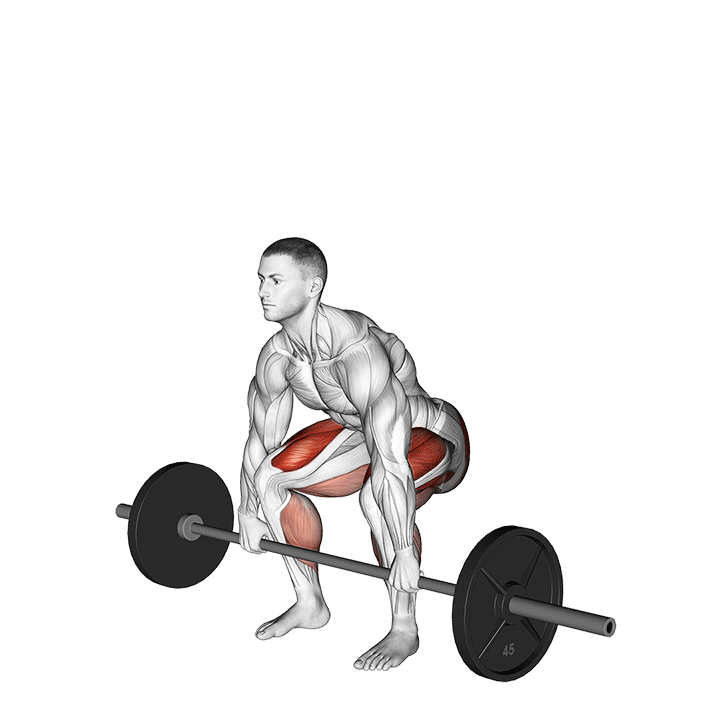
With regular performance (or when used as an auxiliary movement), pause deadlifts will improve the amount of weight the lifter can move during the regular deadlift, as well as create a safer and more efficient deadlift execution overall.
Lifters who suffer from an unstable or a weak initial pull off the floor will benefit the most from using pause deadlifts as a technique tool, as well as those who suffer from knee valgus or trouble initiating a proper hip hinge under load.
Corrects Deadlift Initial Pull Sticking Point and Bottom ROM Weaknesses
Delving further into deadlift mechanics specificity, the pause deadlift aids in correcting certain sticking points during the initial pull of the conventional deadlift.
Such sticking points are either due to an inefficient stance or because of muscular weakness in the quadriceps - both of which are issues that are addressed by performing pause deadlifts.
In addition, pause deadlifts improve weaknesses in the bottom section of the deadlift range of motion by reinforcing the transition between loading of the quadriceps and loading of the posterior chain muscles.
While this effect can be replicated with other exercises like the deficit deadlift or barbell squat, pause deadlifts have the additional benefit of forcing intense isometric contraction of all muscles in the lower body - making the execution of knee extension and hip extension smoother and more stable.
Comparatively Lower Injury Risk, Impact and Total Volume Needed
Due to the greater intensity and longer time under tension of each pause deadlift repetition, lifters will be performing comparatively less volume with subsequently lesser amounts of weight as well.
Because of the sheer weight and intensity involved in most deadlift variations, this reduction in total volume also equates to a reduction in the amount of strain placed on the various tissues of the lifter’s body - thereby reducing subsequent risk of injury alongside short-term muscular exertion.
Make no mistake, however, as a reduction in volume does not always equate to a reduction in exercise difficulty. This is especially true with pause deadlifts, as each repetition is considerably more taxing on the muscles, especially in comparison to more dynamic deadlift variations.
How to Use Pause Deadlifts for Deadlift Technique
Pause deadlifts are great for improving lower body explosiveness and muscle mass - but their real potential lies in their specificity and carryover.
Unlike most other deadlift variations, pause deadlifts are most often performed to improve performance of regular deadlifts themselves.
Of course, achieving such a carryover will require more than just performing a few sets of pause deadlifts. In the event that you do not have access to a suitable athletic coach, identifying the weaknesses in your conventional deadlift execution and remedying them with targeted pause deadlift sets is the next best thing.
Assess Execution Weaknesses
Not all deadlift execution mistakes are the same.
Some lifters will experience unilateral weakness due to a muscular imbalance, while others may simply be underutilizing their posterior chain.
It is important for those wishing to optimize their deadlift to first identify where in their conventional deadlift execution they begin to fail, and why it occurs.
Having an experienced coach assess your form is the most efficient way of doing so - but certain clues like leaning to one side or certain form cues being more difficult than others can help point towards a specific issue in physiology or technique.
Target the Weak Point
Once the issue in deadlift execution has been identified, the pause deadlift may be utilized to help “grease” whatever problem is present.
If it is a muscular weakness of the quadriceps or parts of the posterior chain, the pause deadlift should feature a “pause” at the exact point in which the range of motion recruits said muscles.
For the quadriceps, this is generally when the bar is at mid-shin and the knees are entering a state of extension, as is in line with quadriceps femoris biomechanical function.
For the glutes or hamstrings, it is later during the movement - close to the lock-out point at the apex of the repetition.
If the issue is more of a technique problem rather than a muscular one, the pause should take place immediately before the sticking point or poor mechanic is executed. This will ensure that the lifter must perform said mechanic in an explosive manner, aiding in smooth execution.
Ensure Sufficient Load and Volume
Even with your deadlift weakness addressed and targeted, there should be sufficient load and volume so as to ensure that the rehabilitation is as close as possible to actual deadlift intensity.
This is especially important for muscular weaknesses being corrected by the pause deadlift, as sufficient stimulus will be needed to induce hypertrophy.
Pause Deadlift Alternatives
If the lifter finds pause deadlifts to be too difficult or featuring too little volume for their tastes, there are a number of potential alternatives that can fill its role as both a technique tool and as a general training exercise.
1. Block Deadlifts
Block deadlifts are the ideal alternative to pause deadlifts for lifters wishing to overcome sticking points and improve specific portions of the deadlift range of motion.

Like pause deadlifts, block deadlifts feature a noted lack of momentum at a certain point in conventional deadlift ROM - however, with block deadlifts, the exercise begins at said point, rather than simply pausing.
This allows for greater volume per set, and thereby greater amounts of practice.
2. Rack Pulls
Pause deadlifts primarily correct issues in the bottom half of conventional deadlift range of motion, and unfortunately are not as useful for the latter half.
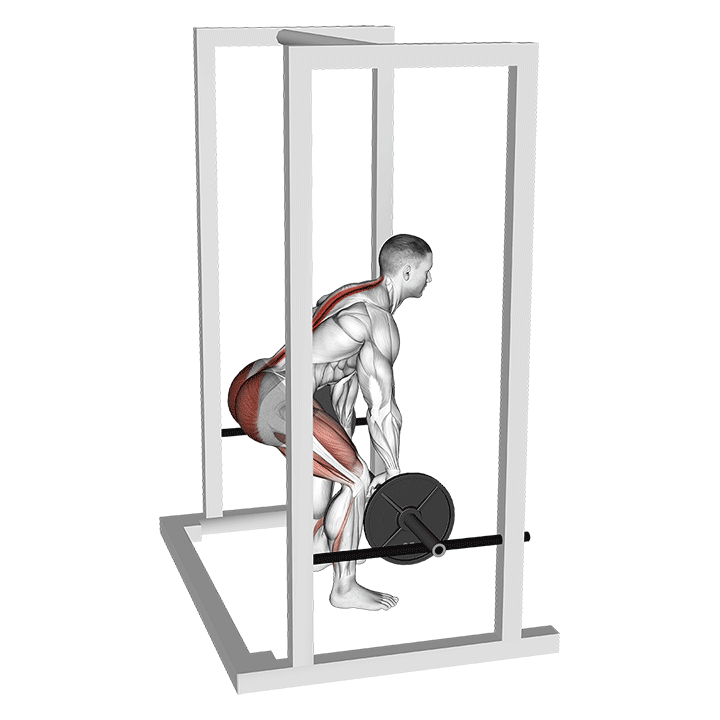
Instead, rack pulls may be used - of which are distinctly similar to the upper half of deadlift range of motion and as such are excellent for practicing lock-out or other mechanics therein.
3. Deficit Deadlifts
For lifters performing the pause deadlift because of its greater intensity per repetition, one possible alternative that features far more dynamic muscular recruitment is the deficit deadlift.
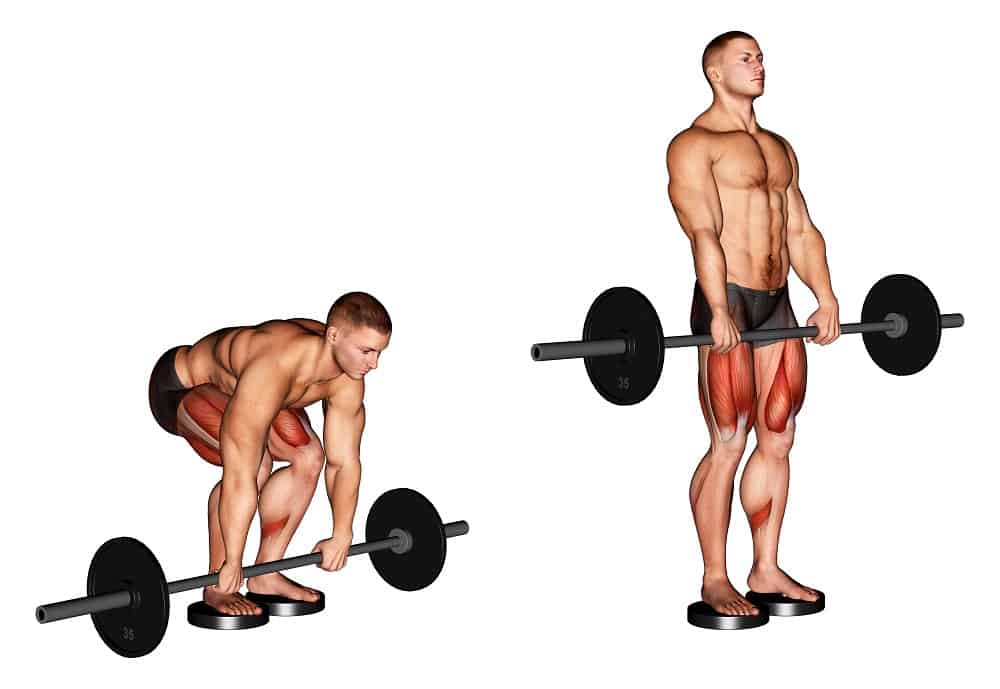
Unlike the pause deadlift, deficit deadlifts are performed at much the same tempo as conventional deadlifts - but will instead feature the lifter being elevated higher than ground level, requiring them to bend further down in order to lift the barbell.
Not only does this feature a similar level of intensity to pause deadlifts, but it will also allow for greater contraction of posterior chain muscles, exceeding that of most other deadlift variations.
Frequently Asked Questions (FAQ)
What are Pause Deadlifts Good for?
Pause deadlifts are excellent for building up the muscles of the lower body and back - as well as for improving your execution of regular deadlift repetitions.
Is a Pause Deadlift Better Than a Deficit Deadlift?
If greater isometric contraction and explosiveness is the goal - then yes, pause deadlifts are superior to deficit deadlifts.
Conversely, deficit deadlifts are far better for full range dynamic contraction, and for maximizing gross muscular strength developments.
How Long Should You Hold a Pause Deadlift?
Though it will depend on your training goals, holding the pause for approximately two seconds with each repetition of the pause deadlift is a good starting point.
Remember that there is a trade-off between the length of each pause and the amount of volume your body will be capable of doing. Longer pauses equate to a longer time under tension, and thereby a greater amount of energy spent with each repetition.
A Few Reminders
As useful as the pause deadlift is, remember that there are other methods of correcting muscular weakness and deadlift technique issues.
In fact, the pause deadlift should only be a small portion of what is a larger corrective program - especially if you are a powerlifting athlete wishing to maximize the amount of weight you lift.
If you are unsure of how to go about utilizing the pause deadlift (or just want to try another approach), then seeking out the advice of a professional athletic coach may be the best option.
References
1. Ricardo Morán-Navarro, Alejandro Martínez-Cava, Pablo Escribano-Peñas & Javier Courel-Ibáñez (2021) Load-velocity relationship of the deadlift exercise, European Journal of Sport Science, 21:5, 678-684, DOI: 10.1080/17461391.2020.1785017
2. Pallarés, Jesús & Sánchez-Medina, Luis & Pérez, Carlos & Cruz-Sánchez, Ernesto & Mora-Rodriguez, Ricardo. (2014). Imposing a pause between the eccentric and concentric phases increases the reliability of isoinertial strength assessments. Journal of sports sciences. 32. 10.1080/02640414.2014.889844.

